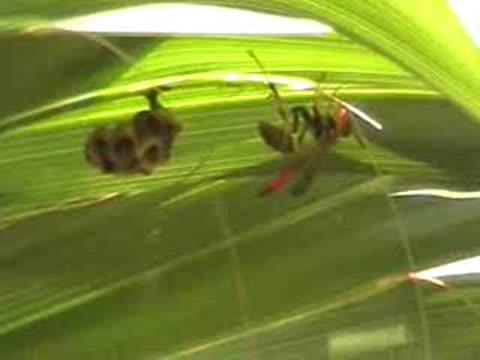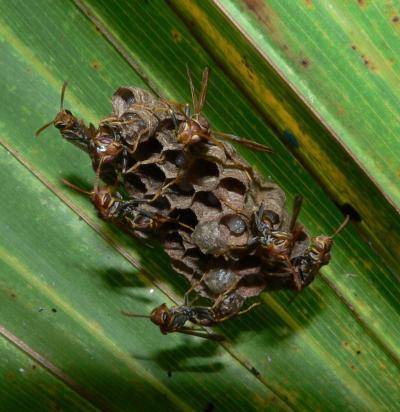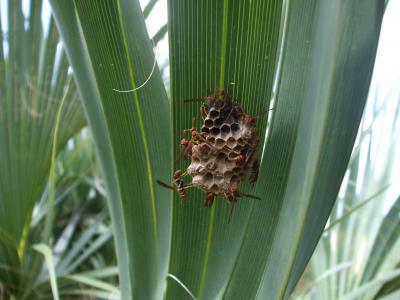Nest-switching is common during the initial period of colony establishment, when individual wasps try to join other colonies and existing members have to decide whether to accept or reject new comers. The wasps recognize nestmates from non-nestmates using chemical signals that are specific to each colony.
"If non-nestmates are accepted, they may either become a worker in the colony or instead attempt to take over the reproductive-dominant role, steal, or cannibalize the colony's offspring," says Mora-Kepfer Uy. "Females are, therefore, trying to balance the potential benefits of having additional help with the possible costs of new members acting selfishly."
According to the study, young non-nestmates were accepted more often than old ones, and they were more frequently accepted into young colonies, than in late colonies. It might favor the colony to accept non-nestmates as subordinate workers during the period of colony establishment. The findings also show that late colonies more frequently rejected both young and old non-nestmates, suggesting that risk of acceptance may be too high at this stage.

This video shows a female wasp marked with pink paint that was a recently accepted non-nestmate who became a subordinate worker. A resident female flies in and forces the newly accepted wasp back into the nest to guard the eggs and larvae.
(Photo Credit: Floria Mora-Kepfer Uy, University of Miami)
"The findings imply that the effect of the social context and immediate needs of a group mediate social acceptance in these flexible societies," says Mora-Kepfer Uy. "These factors may help us understand changes in the composition of other complex animals groups, including human societies,"

This photo shows wasps interacting in social environments.
(Photo Credit: Floria Mora-Kepfer Uy, University of Miami)

This photo shows wasps interacting with newcomers in a social environment.
(Photo Credit: Floria Mora-Kepfer Uy, University of Miami)
Source: University of Miami